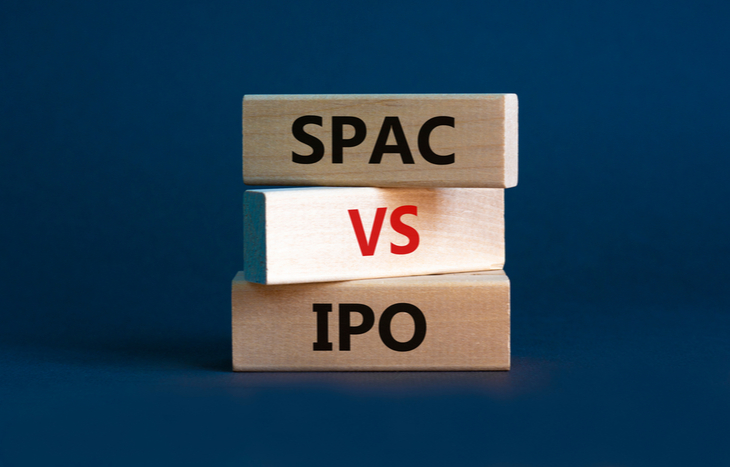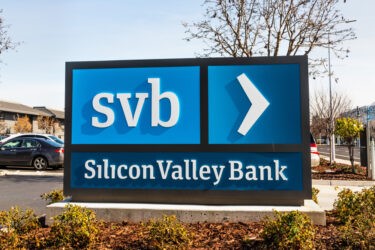SPAC vs. IPO: Different Methods for Going Public
The use of SPACs to raise funds has grown in popularity in the last few years. SPACs and IPOs are popular methods for companies to go public. However, a SPAC vs. IPO has key differences.
SPACs and IPOs are both opportunities for investors to put their funds into promising startups. So, what are the characteristics of a SPAC vs. IPO? Moreover, what influences companies to go one route or another for a public debut? Let’s take a look…

SPAC vs. IPO: Understanding SPACs
SPACs have evolved into a serious alternative to the traditional initial public offering (IPO), even though they are sometimes marketed as a “backdoor” to going public.
SPAC stands for special purpose acquisition company. They are also called blank-check companies. Blank-check companies do not operate businesses – they have no products or services to offer. Instead, they raise money by selling shares of stock to the public in an initial public offering (IPO). These companies IPO with the sole intent of finding a private company to merge with.
As soon as the SPAC finds its target company, the public SPAC and the privately held company merge. Then, the SPACs acquire a private company with that money. The merger allows the company to go public and list on the stock exchange.
Even though the SPAC is already public, the process of merging is still considered a SPAC. Since the SPAC is a public company, the private company also becomes public following the merger. As a result of the acquisition or merger, the SPAC’s ticker symbol will usually change.
SPAC vs. IPO: Understanding IPOs
The process of an IPO is when a private company sells shares to the public for the first time. Shares of the company are usually traded on stock exchanges, where investors purchase and sell stakes in the business. There are different types of IPOs. However, a typical IPO looks like this:
Private companies typically hire investment bankers to start. It is the process of advising and handling an IPO by investment bankers known as underwriting.
The underwriter assists the company in filing its S-1 prospectus with the Securities and Exchange Commission (SEC). In addition to financial data and projections, this document describes how the proceeds of the IPO will be used, as well as potential risks associated with the deal.
Following an IPO approval, underwriters typically organize “roadshows.” Institutional investors attend these events to get an overview of the company and its IPO. Moreover, roadshows gauge investor demand to determine the pricing of the IPO. Moreover, underwriters will allocate institutional investors a portion of the shares if they wish to buy.
Underwriters assist the company in choosing stock exchanges and ticker symbols before listing day. The underwriter will then buy shares from the company and then transfer them to the stock market. Following the transfer, shares get offered to the public.
Furthermore, you can learn more about the IPO process in this step-by-step guide to going public.
So, what’s the difference between a SPAC vs. IPO?
SPAC vs. IPO: What’s the Difference?
Companies often opt to go public via SPAC or IPO. However, these are very different from one another.
IPO: The SEC requires the company to file multiple forms with them as part of the traditional IPO process. Many companies choose to file confidentially. This means that their filings are not accessible to the public. However, the filings must become public 15 days before the offering.
The traditional IPO process is in-depth and usually takes between six to nine months.
SPAC: Compared to an IPO, the process for a SPAC is significantly shorter. From start to finish, the entire process takes approximately 15 weeks. The entire process does not require historical financial statements or assets to be reported. As a result, the SEC is less involved in the process as a whole.
The time and cost saving nature of SPACs makes them attractive to companies. In addition, SPACs already have investors. So, they don’t need to find them through an IPO roadshow.
Investing in SPACs vs. IPOs: 2 Key Things to Know
Keep Reading This Article and Find Out the Top 2 Key Things to Know about SPACs vs. IPOs
Enter your email below to read the reveal the top two key information points for SPACs and IPOs.
You’ll also be opted in to receive our free daily e-letter, Investment U, where you’ll find expert investment insight, analysis and stock picks for all the best investment opportunities.
Nunc ut lorem quis urna auctor ornare quis in sem. Donec sodales viverra ante, et scelerisque libero iaculis sit amet. Phasellus fermentum vitae tellus quis suscipit. Ut bibendum aliquet odio, a venenatis augue fermentum at. Nunc fringilla dui lorem, congue blandit ex egestas in. Vestibulum dapibus orci ut felis consequat euismod. Sed pretium, risus vel blandit porttitor, diam diam sodales dui, in lobortis lorem ex vitae est. Nullam ac venenatis massa. Integer blandit, diam et fringilla semper, nulla dui suscipit urna, eget hendrerit quam ex rutrum tellus. Nam imperdiet, nibh nec mollis vulputate, felis ante posuere leo, at ultrices nulla neque vitae mi.Nunc ut lorem quis urna auctor ornare quis in sem. Donec sodales viverra ante, et scelerisque libero iaculis sit amet. Phasellus fermentum vitae tellus quis suscipit. Ut bibendum aliquet odio, a venenatis augue fermentum at. Nunc fringilla dui lorem, congue blandit ex egestas in. Vestibulum dapibus orci ut felis consequat euismod. Sed pretium, risus vel blandit porttitor, diam diam sodales dui, in lobortis lorem ex vitae est. Nullam ac venenatis massa. Integer blandit, diam et fringilla semper, nulla dui suscipit urna, eget hendrerit quam ex rutrum tellus. Nam imperdiet, nibh nec mollis vulputate, felis ante posuere leo, at ultrices nulla neque vitae mi.
Integer blandit, diam et fringilla semper, nulla dui suscipit urna, eget hendrerit quam ex rutrum tellus. Nam imperdiet, nibh nec mollis vulputate, felis ante posuere leo, at ultrices nulla neque vitae mi.Nunc ut lorem quis urna auctor ornare quis in sem. Donec sodales viverra ante, et scelerisque libero iaculis sit amet. Phasellus fermentum vitae tellus quis suscipit. Ut bibendum aliquet odio, a venenatis augue fermentum at. Nunc fringilla dui lorem, congue blandit ex egestas in. Vestibulum dapibus orci ut felis consequat euismod. Sed pretium, risus vel blandit porttitor, diam diam sodales dui, in lobortis lorem ex vitae est. Nullam ac venenatis massa. Integer blandit, diam et fringilla semper, nulla dui suscipit urna, eget hendrerit quam ex rutrum tellus. Nam imperdiet, nibh nec mollis vulputate, felis ante posuere leo, at ultrices nulla neque vitae mi.
SPAC vs. IPO: The Bottom Line
The first thing to keep in mind is that no investment guarantees returns. Additionally, IPOs and SPACs can both be risky investments. In terms of their performance, they can be subject to a lot of uncertainty and volatility.
You may have to prepare for big price swings, for instance. It’s not uncommon for IPOs and SPACs to generate high expectations at first – only for them to disappoint once the initial excitement wears off.
It is important to understand that IPOs and SPAC investments are risky investments that are not appropriate for everyone. Consider consulting a financial advisor if you’re interested in finding out if they’re right for your investment risk tolerance and overall financial goals.
As always, make sure to research before you invest. IPOs and SPACs can be volatile for the first few months. And share prices can change quickly. But if IPO investing interests you, check out our top recent IPOs and our IPO calendar. We update it daily to give you the latest news on upcoming and filed IPOs.





